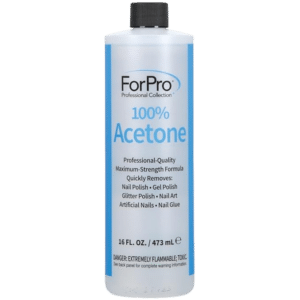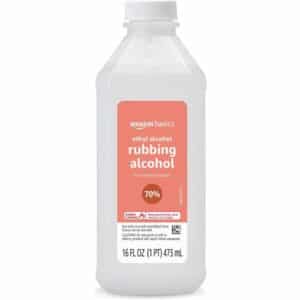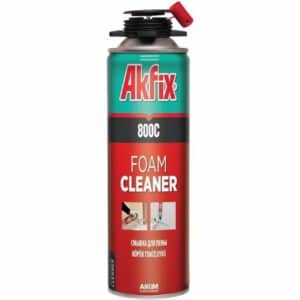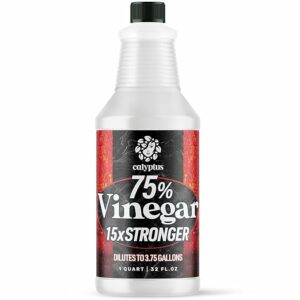How Can I Get Spray Foam Out Of My Clothes?
Accidents happen, and one of the most frustrating things that can happen is getting spray foam on your clothes. Spray foam is a highly adhesive material that can adhere to fabrics and create a stubborn stain. Fortunately, there are several methods for removing spray foam from clothes that can be done at home. In this article, we will explore various methods for removing spray foam and preventing future accidents.
Aside from being difficult to remove from clothing, spray foam can also have other effects on clothes. The foam’s adhesive properties can cause it to stick to clothing fibers, creating a rough texture that can be uncomfortable to wear. Additionally, the foam can leave a residue on the fabric, making it look dirty and stained even after removal.
It’s essential to take precautions when working with spray foam to avoid getting it on your clothes. Wearing protective clothing and covering exposed skin can help prevent contact with the foam. In case of accidental contact, it’s best to address the issue immediately to prevent the foam from hardening and embedding itself in the fabric.
Removing Spray Foam from Clothes
There are several methods for removing spray foam from clothes, depending on the severity of the stain. One effective method is to use a solvent such as acetone or mineral spirits. Apply the solvent to the affected area and let it sit for a few minutes before gently scraping the foam off with a plastic scraper. Repeat the process until the foam is completely removed.
If the foam has already hardened, it’s best to use a mechanical method such as sandpaper or a wire brush to remove the foam. Be careful not to damage the fabric by being too aggressive with the tool.
Another method for removing spray foam from clothes is to use a citrus-based cleaner or a mixture of vinegar and water. Apply the cleaner to the affected area and let it sit for a few minutes before gently scrubbing the foam off with a soft-bristled brush. Rinse the fabric with warm water and repeat the process until the foam is gone.
Spray foam can be a useful material for insulation and sealing purposes, but it can also be a nuisance when it comes into contact with clothing. Taking precautions to avoid contact and addressing the issue immediately can help prevent damage to clothes. If removal is necessary, there are several methods available, including solvents, mechanical methods, and citrus-based cleaners.
Immediate Actions to Take When Spray Foam Gets on Clothes
If the spray foam has gotten onto clothing, it is essential to act quickly. Here are some immediate actions to take:
Blotting the Excess Foam
The first thing to do when spray foam gets on clothes is to remove any excess foam. Use a paper towel or spatula to collect as much foam as possible. Be careful not to rub the foam, as this can force it deeper into the fabric fibers.
If the foam has already dried, use a blunt object like a spoon or butter knife to scrape off as much of the foam as possible.
Cooling the Affected Area
After blotting any excess foam, it’s time to cool the affected area. Place the clothing into a freezer for about an hour. The cold air will help harden the foam and make it easier to remove.
If you don’t have access to a freezer, you can use ice cubes wrapped in a plastic bag and apply them to the affected area until the foam hardens.
Assessing the Damage
When the clothing has been in the freezer for at least an hour, remove it and assess the damage. If the foam is still wet, repeat blotting and cooling. If the foam has hardened, move on to the removal method of your choosing.
If the foam has left a stain on the clothing, do not attempt to remove it with hot water or a dryer. This can cause the stain to set permanently. Instead, use a stain remover or take the clothing to a professional cleaner.
Removing the Foam
There are several methods to remove spray foam from clothing. One method is to use a solvent like acetone or nail polish remover. Apply a small amount of the solvent to a cotton ball or cloth and dab it onto the affected area. Be sure to test the solvent on a small, inconspicuous area of the clothing first to make sure it doesn’t damage the fabric.
Another method is to use a mixture of dish soap and warm water. Apply the mixture to the affected area and let it sit for a few minutes. Then, use a cloth or sponge to gently scrub the foam away.
If the foam has hardened, you can also try using a dull knife or sandpaper to scrape it off. Be careful not to damage the fabric.
After removing the foam, wash the clothing in cold water with a mild detergent. Check the care label on the clothing to make sure it can be washed in a machine. If not, hand wash the clothing using a gentle detergent.
By following these immediate actions, you can effectively remove spray foam from clothing and prevent any permanent damage.
Different Methods to Remove Spray Foam from Clothes

Accidentally getting spray foam on your clothes can be frustrating, but luckily there are several methods to remove it. Here are some popular methods:
Using Acetone or Nail Polish Remover

Acetone and nail polish remover are useful for removing spray foam from clothing, as they both dissolve it. However, it is important to note that they can also dissolve some fabrics, so be sure to perform a spot test before using them on your clothes. To use this method, soak the affected area in acetone or nail polish remover for several minutes, then blot with a paper towel or cloth. Repeat as necessary until the foam has been removed.
If you’re worried about the harsh chemicals in acetone or nail polish remover, you can try using a natural alternative like coconut oil. Simply apply a small amount of coconut oil to the affected area and let it sit for a few minutes before gently wiping it away with a cloth.
Applying Rubbing Alcohol

Rubbing alcohol is another commonly used method for removing spray foam from clothing. To use this method, pour a small amount of rubbing alcohol onto the affected area and allow the alcohol to dissolve the foam. Using a cloth or soft-bristle brush, gently scrub the fabric to remove the foam. Avoid rubbing too hard, as this can damage the fabric.
It’s important to note that rubbing alcohol can also discolor or damage some fabrics, so be sure to perform a spot test before using it on your clothes. If you’re looking for a gentler alternative, you can try using dish soap and warm water to remove the foam. Simply mix a small amount of dish soap with warm water and apply it to the affected area, then gently scrub with a cloth.
Utilizing a Commercial Foam Remover

If the above methods aren’t working, it may be time to try a commercial foam remover. There are several foam removal products available on the market specifically designed for this purpose. Follow the instructions on the product label for the best results.
Some commercial foam removers contain harsh chemicals, so be sure to wear gloves and work in a well-ventilated area when using them. If you’re looking for a more eco-friendly option, you can try using a citrus-based cleaner or a baking soda paste to remove the foam.
Trying a DIY Vinegar Solution

A popular DIY method for removing spray foam from clothing is to create a vinegar solution. Mix equal parts white vinegar and warm water and soak the affected area in the solution for several minutes. Using a cloth or soft-bristle brush, scrub the fabric to remove the foam. Rinse the garment thoroughly and wash as usual.
Vinegar is a natural acid that can break down the foam, making it easier to remove. Plus, it’s a gentle and affordable option that you probably already have in your pantry.
Overall, there are several methods to remove spray foam from clothing, so don’t panic if you accidentally get some on your clothes. With a little patience and the right technique, you can get your clothes looking good as new in no time.
Tips for Washing Clothes After Spray Foam Removal
Removing spray foam from clothing can be a challenging task, but with the right techniques, it can be done successfully. Once the foam has been successfully removed from the clothing, it’s essential to wash it properly to ensure that there are no remaining stains or residue left behind. Here are some tips for washing clothes after spray foam removal:
Pre-Treating the Stain
Before washing the garment, it’s essential to pre-treat the stain with a stain remover or a mixture of laundry detergent and warm water. This will help to loosen any remaining foam residue and make it easier to remove during the washing process. Apply the pre-treatment solution directly to the stain and let it sit for several minutes before washing.
For particularly stubborn stains, you may need to repeat the pre-treatment process multiple times before washing the garment.
Choosing the Right Detergent and Water Temperature
When it comes to washing clothes after spray foam removal, it’s important to choose the right detergent and water temperature. Choose a detergent that is appropriate for the fabric, and make sure to wash the garment in cold water. Hot water can cause the foam to harden and embed into fabrics further, making it more challenging to remove.
If you’re unsure which detergent to use, check the garment’s care label for recommendations. Some fabrics may require a specific type of detergent or special care instructions.
Drying and Inspecting the Clothes
After washing the garment, hang it up to dry instead of putting it in the dryer. This will help to prevent any remaining stains from setting in and becoming more challenging to remove. Once the garment is dry, inspect it closely for any remaining stains or residue.
If you notice any remaining stains, repeat the foam removal process until the stain is entirely gone. It’s essential to remove all traces of the foam to prevent any damage to the fabric or discoloration.
By following these tips for washing clothes after spray foam removal, you can ensure that your garments are clean, stain-free, and ready to wear again.
Preventing Future Spray Foam Accidents
Preventing spray foam accidents is not only essential to keep your clothing stain-free, but it can also help you avoid any potential health hazards. Here are some preventive measures to take:
Wearing Protective Clothing
Wearing protective clothing is crucial when working with spray foam. The foam’s adhesive properties can make it challenging to remove from skin and clothes. Therefore, it’s essential to protect yourself by wearing gloves, goggles, and work clothes.
Moreover, if you have sensitive skin, it’s best to wear long-sleeved shirts and pants to avoid any direct contact with the foam.
Properly Storing Spray Foam Products
Storing spray foam products in a cool, dry place is essential to prevent the foam from becoming too sticky and challenging to remove. Make sure that the products are tightly sealed and not exposed to heat or moisture. Exposure to these elements can cause the foam to expand and harden, making it unusable.
Furthermore, it’s crucial to keep the products out of reach of children and pets. The foam can be harmful if ingested or inhaled, so it’s best to store it in a secure location.
Practicing Safe Application Techniques
When applying spray foam, it’s essential to follow the instructions carefully. Avoid getting the foam on clothing by covering any surfaces or items that might come into contact with it. Also, make sure to work in a well-ventilated area to avoid inhaling any fumes.
If you’re using a spray foam gun, make sure to keep it clean and free of any clogs. Clogs can cause the foam to spray unpredictably, leading to potential accidents.
By following these preventive measures, you can ensure that your spray foam projects go smoothly and safely. Remember to always read the instructions carefully and take the necessary precautions to avoid any accidents.
Removing spray foam from clothing can be a challenging and frustrating task, but it is not impossible. By following the tips and techniques outlined in this article, you can successfully remove the foam from your clothes and prevent future accidents. Remember to act quickly, choose the right removal method, and wash the garment carefully. With some patience and effort, your clothes will be stain-free and as good as new.




